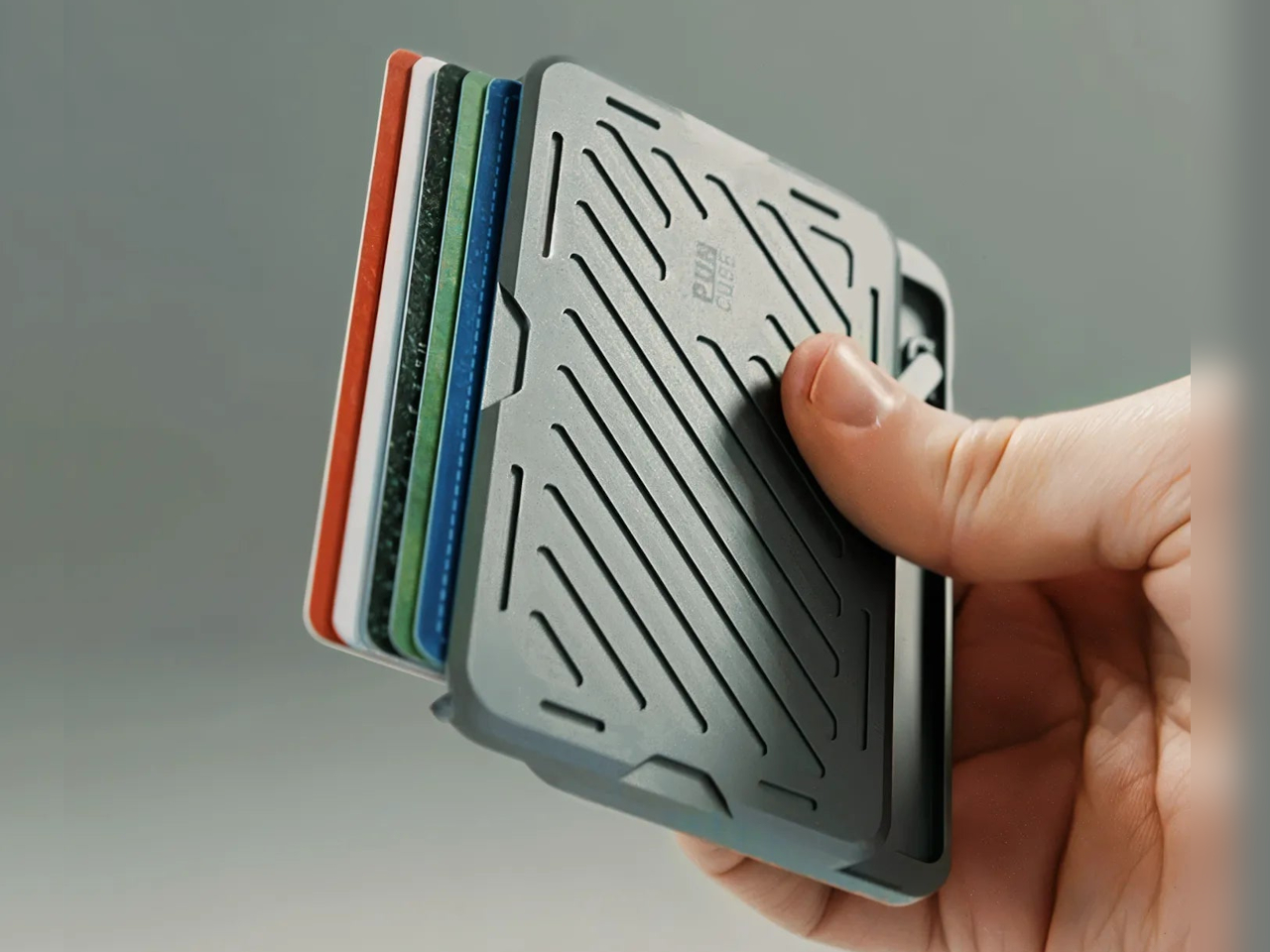
WWW.POLYGON.COM
How to reach Room 46 in Blue Prince
Navigating through the twists and turns of the Mount Holly estate to reach Room 46 is one of the main goals of Blue Prince.
In Blue Prince, you play as Simon, a 14-year old child who has inherited the will of his wealthy grandfather — under condition that you can find the elusive Room 46. Room 46 is a hidden and rumored room that can only be found at the northernmost end of the estate, but since the mansion’s floor plan changes every day, how are you supposed to reach such a room?
In this Blue Prince guide, we’ve given you a full walkthrough on how to reach Room 46. Take note that while we’ve taken steps to partition out segments, this guide still covers some spoilers on specific Blue Prince puzzles.
How to reach Room 46 in Blue Prince
There are many routes to reach Room 46 in Blue Prince. You can actually get there in one day with a bit of luck and a lot of information, but this walkthrough will instead focus on taking a route with minimized randomness. We can’t control your RNG, but we can offer some universal advice.
Before you start…
Before we get into the meat of the walkthrough, we recommend that you unlock as many permanent additions as you can. While our guide will ask you to unlock just one permanent addition, these upgrades to the house will drastically help you on your days as they’ll provide you with extra starting resources and another way to reach one of the mandatory rooms to finish the game.
Additionally, make sure to keep an eye out for these items:
Broken Lever
Battery Pack
Sledgehammer
These items aren’t necessarily required to reach Room 46, but they can combine to make the Power Hammer, which can make your journey a lot easier. The Power Hammer can break walls to reveal hidden Antechamber Levers and corridors that allow you to save steps and time. (That said, save the Power Hammer in your Coat Check for later use!)
Blue Prince walkthrough overview
In brief, here’s the steps of how to reach Room 46 and claim your inheritance in Blue Prince:
Step 1: Unlocking Outer Rooms
Step 2: Traversing the Tomb
Step 3: Unlocking the Antechamber
Step 4: Finding the Basement through the Foundation
Step 5: Getting through the Basement
Step 6: Unlocking Room 46
Some of these steps aren’t necessarily required to reach Room 46, but, as noted before, this route will provide you with a few permanent changes that’ll make your journey easier day to day.
Step 1: Unlocking Outer Rooms
Outer Rooms are one of the many permanent additions in Blue Prince, and can be unlocked by drafting the Garage and Utility Closet in your estate, and using the two to open the West Gate and reveal the West Path as a permanent addition. (The Garage door can also be opened if the Boiler Room is powered and connected to the Garage, but the chance for that happening is a little more rare.)
For more details, see our guides on how to open the Garage door and how to open the West Gate, but the key takeaway here is to make sure to unlock the gate, so you can revisit the Outer Rooms at the start of each day.
The Outer Rooms function similarly to the rooms inside the estate, as they must be drafted every day, but the room you’re looking for is the Tomb.
Step 2: Traversing the Tomb
Inside the Tomb, you’ll find statues that resemble the stained glass windows in the Chapel. To progress, you’ll need to activate each statue in the same order as they appear in the Chapel by interacting with the arm holding the item:
Gardener – Rimmed hat and a hoe
Chef – Chef hat and a pizza peel
Farmer – Cowboy hat and a rake
Chimney Sweep – Top hat and a brush
Maid – Bonnet and a broom
Jockey – Riding helmet and a racing whip
Queen – Crown and a scepter
This will lower a secret wall and reveal a path that takes you to the Catacombs. Inside, you’ll find a lot of coffins, a large arrow, and a statue of Draxus, a skeleton wielding a scythe. Interact with the arm holding the scythe to lower yet another secret wall, revealing a path to the Abandoned Mine.
As soon as you step onto the path, turn to the left to find a minecart. Interact with the minecart and pull it backwards until it can’t move further. This won’t have an immediate effect on your day, but it’ll be necessary for a step later down the line. With that done, you can return to the daily program of trying to reach the Antechamber.
Step 3: Unlocking the Antechamber
Unlocking the Antechamber may seem like the penultimate goal, but it’s about the midway point of your quest to find Room 46. To enter the Antechamber, you’ll need to unlock one or more of the east-, south-, or west-facing doors and build a path to the open door.
Each door can be unlocked by finding and activating one of its associated levers hidden in the Secret Garden, Greenhouse, and Great Hall, alongside additional locations. See our guide on where to find all Antechamber levers for more details.
Before heading into the Antechamber, you’ll need to make sure you have enough steps to reach either the Foundation or Coat Check from the Antechamber because you’ll need to do some extra walking.
In one day, you’ll need to [deep breath] unlock one of the Antechamber’s doors, connect a path to the Antechamber, collect the Basement Key inside, and unlock its associated door. (The key can also be left in the Coat Check to be used on a later day if you can’t accomplish all of that in one go.)
Step 4: Finding the Basement through the Foundation
The Basement Key can open two doors around the estate: the door at the bottom of the Foundation and the door at the bottom of the drained Fountain. This walkthrough covers the route through the Foundation.
One of the most important rooms in Blue Prince is the Foundation. The Foundation is a room that defies the rules of the estate, as it will stay in the same position every day. It’s a rare blueprint, so the odds of it appearing aren’t very high, but if it shows up as an option, you should draft it.
As its location is permanent and it’s a room you’ll need to go in and out of, you might be worried about its placement on your grid, but you should know that it’s only capable of appearing in the middle three columns and the rank you place it at has its pros and cons.
When placed in higher ranks, it’s going to be harder to reach, but you will need to traverse between the Antechamber and Foundation in order to complete the game. The closer it is, the fewer steps you’ll need to take. On the other hand, when placed in lower ranks, the pros and cons are reversed.
Inside the Foundation, there’s an elevator that’s a little too high off the ground to reach, and you’re going to need to lower it down to ride it to the basement. To lower the elevator, you’ll need to draft a room with a door that connects to the Foundation’s wall without a door. As you try to enter the Foundation from the other side, you’ll find a lever that lowers the elevator to the ground.
After activating the lever, return to the Foundation and ride the elevator down and permanently unlock the door with the red symbol using the Basement Key.
Step 5: Getting through the Basement
With the door unlocked, you can now enter the Basement through the Foundation. The Basement is full of boxes, filing cabinets, your typical basement storage, but the most important of all are the jacklifts, the carts with stacks of boxes on top, and a button that is a little too high to reach.
To press the button, we’ll first need to shift the jacklifts to create a passage leading to the opposite side of the L-shaped room. Here, you’ll find more cabinets and boxes, but also a set of stairs that is surrounded by boxes along one wall and a ramp leading up to the top of a line of boxes along the opposite wall.
To reach the stairs, you’ll need to create a bridge between the two walls using a jacklift and a powered jacklift, which can raise and lower its height. Once the bridge is complete and you descend the stairs, push the powered jacklift straight across to the opposite wall and raise its height to create another pathway.
This pathway will lead you to the button, but first, you’ll need to create another bridge with three jacklifts. Reuse the two used for the first bridge and the jacklift that can move parallel to the pathway to connect the boxes. Once the bridge is complete, return to the ramp from before and push the button at the end of the path to reveal a secret passage way into the Reservoir.
(This step is entirely optional, but, if you have a power hammer, you can create a shortcut to the basement to make your trip a little quicker.)
Head to the top of the L-shaped basement to find a patch of the brick wall that is a little darker than the rest. Interact with the wall to break open a hidden passageway that leads to an area of the grounds just beside the four braziers. Now at the start of a new day, you can go down the stairs and enter the basement right away!
Step 6: Unlocking Room 46
Now that you’ve arrived at the Reservoir, you’ll notice a lake to your left, a railroad track ahead of you, and a doorway on your right.
Our main focus in the Reservoir will be just through the doorway on the right, which will reveal a gear platform and a lever that can rotate the platform. Turn the lever four times, which won’t create a walkway straight ahead of you, but rather to your left.
Exit the doorway and follow the railroad track to find the minecart you repositioned in Step 1 and a path to the right. Continue down the path and cross the newly created gear pathway to the next lever. Turn this lever five times and continue along the path and through a doorway to find eight locked doors, a familiar moon symbol, and a lever unlocking Room 46.
Return to the gear platform, but don’t immediately walk across. Turn the lever five times and walk across to what seems like a dead end, but in actuality, is a secret path. Open the door inside to end up back on the railroad track path from before.
Now, make the trek back to the Antechamber and enter Room 46 to complete Blue Prince. Although this is technically the end of Blue Prince, there are still a lot of puzzles and mysteries to solve inside the estate!
0 التعليقات
0 المشاركات
47 مشاهدة












